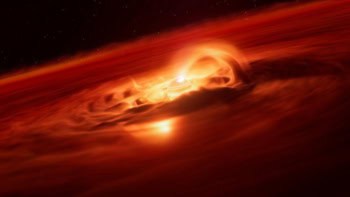Astronomers have confirmed the existence of an extrasolar planet using two independent observation techniques for the first time. On 5 November, Geoff Marcy and Steve Vogt from the University of California and Paul Butler of the Anglo Australian Observatory detected a wobble around HD 209458, a Sun-like star some 153 light-years from Earth. Most extrasolar planets detected so far have been found with this method. They alerted Greg Henry of Tennessee State University who used a set of automated optical telescopes to confirm that the brightness of the star dropped by 1.7 percent as the planet passed in front of it. "This demonstrates that our indirect evidence for planets really is due to planets," said Marcy. "This is what we've been waiting for."
According to calculations by Marcy and colleagues, the planet has 63 percent of the mass of Jupiter and orbits the star every 3.5 days. On Thursday, the next time the star is eclipsed, more telescopes will be turned towards the star to confirm the findings. By combining data from both sets of observations, planet was found to have a diameter some 60 percent larger than that of Jupiter.
The results suggest that the density of the planet is about one-fifth that of liquid water, which would make it a gas giant. However, the planet is just over five million kilometres away from the star, which is only one-tenth the distance between Mercury and the Sun. As giant planets do not form close to stars, the data suggest that the planet drifted in from the outer edges of its star system.



